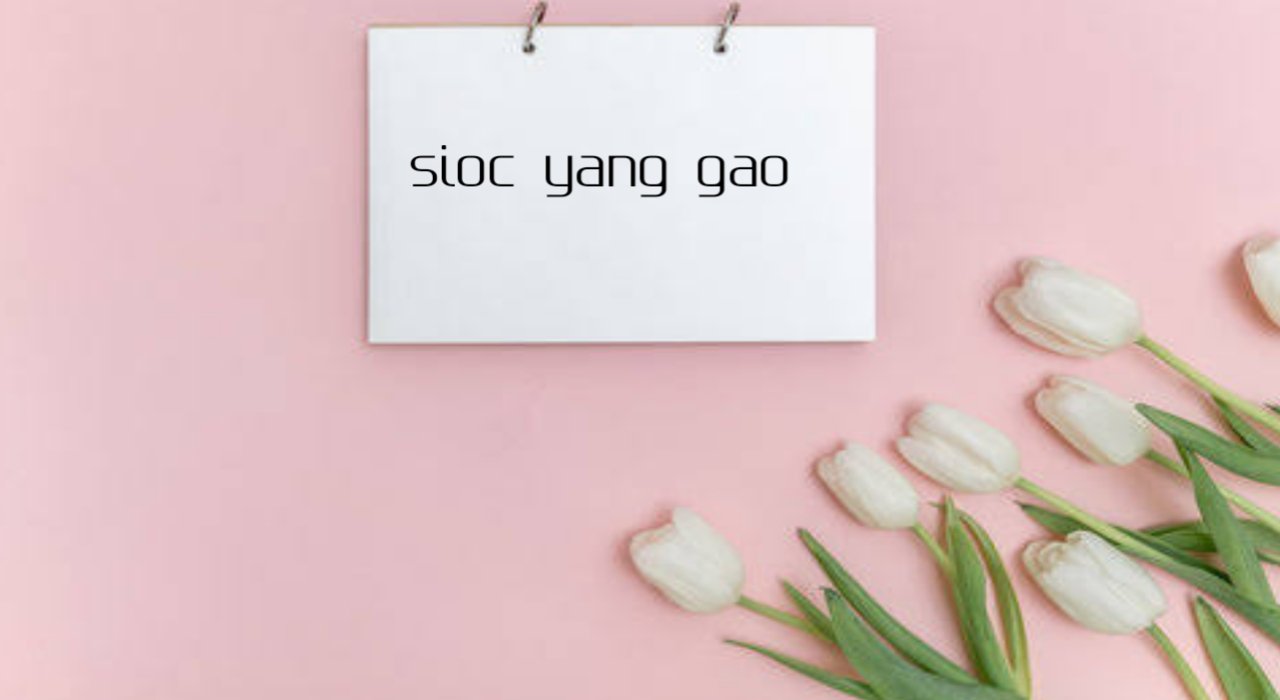Why You Need to Try sioc yang gao
When you think of Chinese cuisine, your mind might drift to popular dishes like dumplings, Peking duck, or even fried rice. However, there’s a rich culinary world beyond these well-known plates. One lesser-known but cherished item in traditional Chinese cuisine is Sioc Yang Gao. This delightful dish carries deep cultural significance and offers a unique taste experience that blends history, tradition, and flavor. In this blog post, we’ll dive into the essence of Sioc Yang Gao, exploring its origins, preparation, and why it deserves a spot on your culinary bucket list.
What is Sioc Yang Gao?
Sioc Yang Gao is a traditional Chinese steamed cake, often enjoyed during special occasions, particularly in southern China. Its name, loosely translated, means “steamed glutinous rice cake.” Made primarily from glutinous rice flour, this cake is known for its chewy texture and slightly sweet flavor, making it a favorite among those who appreciate subtle yet satisfying desserts.
The Origins of Sioc Yang Gao
The origins of Sioc Yang Gao can be traced back centuries, deeply rooted in Chinese culture and tradition. This cake is not just a treat; it’s a symbol of unity, family, and prosperity. Historically, it was often prepared during the Lunar New Year to symbolize the idea of sticking together as a family, thanks to its sticky, glutinous nature. Families would gather to make Sioc Yang Gao together, reinforcing the values of cooperation and shared heritage.
How is Sioc Yang Gao Made?
The preparation of Sioc Yang Gao is an art that has been passed down through generations. While the ingredients are simple, the process requires patience and attention to detail.
- Ingredients:
- Glutinous rice flour
- Sugar (brown sugar is often used for its rich flavor)
- Water
- Optional additions: Red bean paste or sweetened chestnuts for filling
- Preparation:
- Mixing: The glutinous rice flour is mixed with water and sugar to form a smooth, thick batter. The consistency of the batter is crucial—it should be thick enough to hold its shape but not too stiff.
- Steaming: The batter is then poured into a mold or tray. Some variations may include a layer of sweet filling like red bean paste. The cake is steamed for several hours until it achieves a chewy, slightly sticky texture.
- Cooling: Once steamed, Sioc Yang Gao is allowed to cool, which helps it firm up. It can be sliced into pieces and served either warm or at room temperature.
Variations of Sioc Yang Gao
Like many traditional dishes, Sioc Yang Gao comes in various forms depending on the region and family recipes. Some versions are plain, showcasing the pure flavor of the rice, while others are filled with sweet or savory fillings, like red bean paste, sweet potato, or even preserved fruits. Additionally, the cake’s sweetness can be adjusted, with some preferring a mild sweetness and others opting for a richer, caramelized flavor by using dark brown sugar.
Why You Should Try Sioc Yang Gao
If you’re looking to explore authentic Chinese cuisine beyond the typical dishes, Sioc Yang Gao offers a delightful adventure. Its unique texture, subtle sweetness, and cultural significance make it more than just a dessert—it’s a connection to the rich traditions of Chinese cooking. Whether you’re enjoying it during a festive celebration or as a treat with tea, Sioc Yang Gao provides a taste of history and a culinary experience that is both comforting and intriguing.
Conclusion
Sioc Yang Gao is a traditional Chinese delicacy that may not be as widely known as other dishes, but it holds a special place in the hearts of those who cherish Chinese culture. From its historical roots to its simple yet satisfying flavor, this steamed cake is a testament to the beauty of traditional cooking and the importance of family and tradition in Chinese culture. Next time you have the chance, give Sioc Yang Gao a try—you might just discover a new favorite dessert.
Frequently Asked Questions (FAQs)
Q1: Is Sioc Yang Gao gluten-free?
Yes, Sioc Yang Gao is typically gluten-free as it is made from glutinous rice flour, which contains no gluten despite its name.
Q2: Can I make Sioc Yang Gao at home?
Absolutely! The ingredients are simple, but the steaming process requires some time and patience. Many recipes are available online to guide you.
Q3: How should Sioc Yang Gao be stored?
Sioc Yang Gao should be stored in an airtight container at room temperature for up to two days. For longer storage, it can be refrigerated and gently reheated before serving.
Q4: What does Sioc Yang Gao taste like?
Sioc Yang Gao has a chewy texture and a mildly sweet flavor, often enhanced by fillings like red bean paste or sweetened chestnuts.
Q5: Is Sioc Yang Gao eaten only during festivals?
While traditionally associated with the Lunar New Year, Sioc Yang Gao can be enjoyed at any time of the year as a delicious snack or dessert.
Q6: Are there any variations of Sioc Yang Gao?
Yes, variations include different fillings like red bean paste or sweet potato, and the level of sweetness can vary based on the type of sugar used.

Leave a Reply